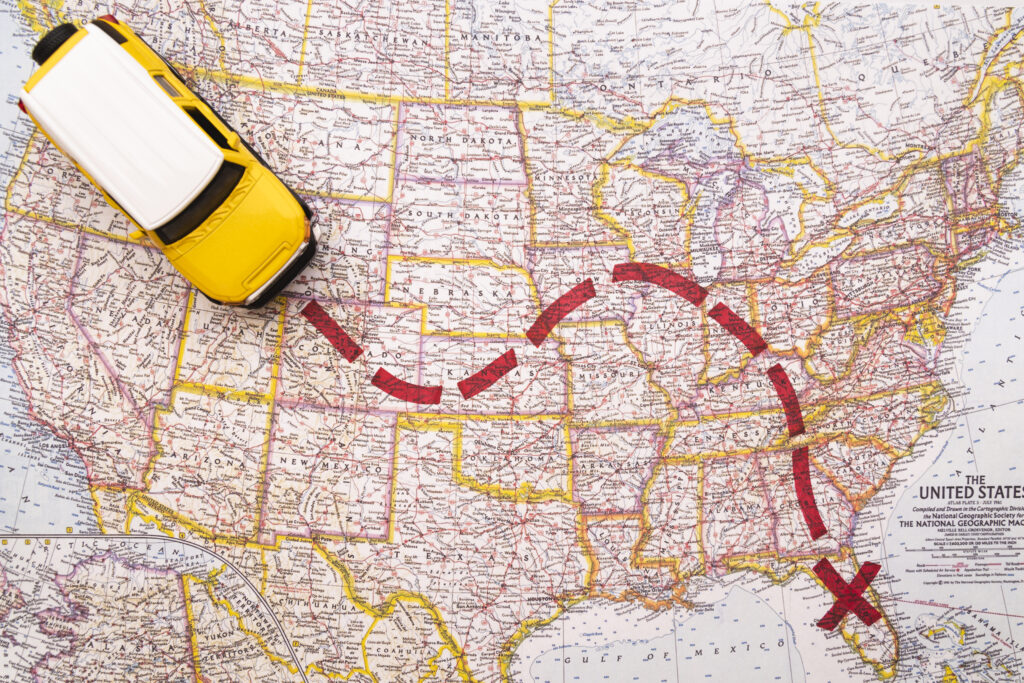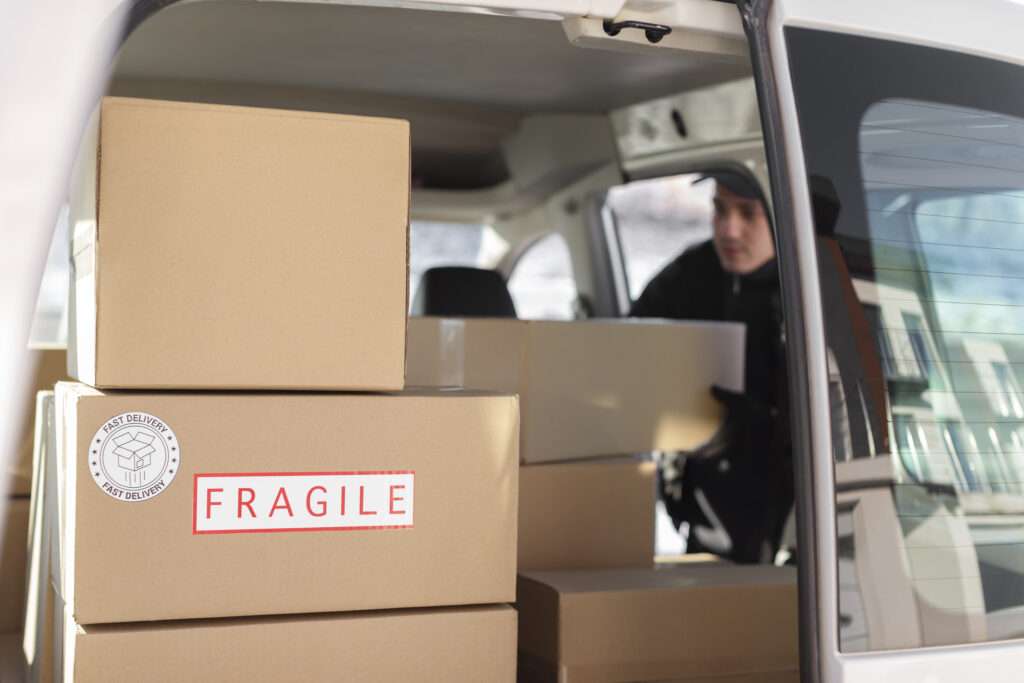Are you planning a bold leap and moving from Canada to the USA in 2025? Whether it is for a dream job, family, or a fresh adventure, relocating across the Canada–U.S. border is an exciting but complex journey. In this guide, we will walk you through every essential step, covering U.S. visa requirements for Canadians, cross-border regulations, paperwork, budgeting tips, and moving checklists. This way your international move to the United States can be smooth, worry-free, and even enjoyable.
Navigating Cross-Border Regulations & Must-Have Documents
A Canada to USA move involves strict regulations, and advance preparation is key. U.S. Customs and Border Protection (CBP) requires full transparency on what you are bringing, your reason for entering, and your immigration status.
Travel Documents & Legal Status
Passports / Enhanced IDs
You must present a valid Canadian passport or enhanced driver’s license at the border. Enrollment in Trusted Traveler Programs such as NEXUS can also speed up the process.
Immigration Proof
You must carry your valid U.S. visa (H-1B, TN, or L-1) or proof of lawful permanent residency (Green Card or immigrant visa). These documents are essential for legally establishing your right to live and work in the United States.

Declaring Household Goods
When moving household goods from Canada to the USA, you must follow specific U.S. Customs and Border Protection (CBP) rules to avoid delays or unexpected costs.
- CBP Form 3299: This is the main document used to declare unaccompanied household goods. It allows you to import personal belongings without paying duty, provided the items have been in your possession for at least one year and are intended for personal use.
- Bill of Lading: Issued by your moving company, this document outlines your shipped inventory and is required at the border point of entry.
- Gypsy Moth Certificate: If you are moving from Ontario, Quebec, or New Brunswick, this certificate is required to prove that your outdoor furniture and wooden items are pest-free. It protects U.S. agriculture and can be obtained after an inspection by the Canadian Food Inspection Agency (CFIA), as detailed in directive D-98-09.
Vehicle Import Compliance for Canada to USA Relocation
If you plan to bring your car across the border, you will need to meet U.S. import requirements for vehicles.
- HS-7 Form (DOT): Confirms your vehicle meets the U.S. Department of Transportation (DOT) safety standards.
- EPA Form 3520-1: Demonstrates that your vehicle complies with U.S. Environmental Protection Agency (EPA) emission standards.
- Manufacturer’s Compliance Letter: Often required to confirm your vehicle was originally manufactured to meet U.S. regulations.

Alcohol and Tobacco Regulations
When moving from Canada to the USA, travelers can bring limited amounts of alcohol and tobacco duty-free.
- Alcohol: Adults over 21 may bring up to 1 liter of alcohol duty-free. Anything beyond this limit must be declared at the border and may incur U.S. duties. Do not ship alcohol through movers, as it is usually prohibited in household goods shipments. Instead, carry it separately and declare it upon entry. Keep in mind that individual U.S. states may have their own alcohol import limits, so check local laws if you plan to bring larger amounts.
- Tobacco: You may bring up to 200 cigarettes, 50 cigars, or 2 kg of manufactured tobacco (including smokeless) duty-free.
Pet Relocation: Rules, Risks & Preparation
If you’re bringing pets, be prepared with the correct documents and veterinary records. The U.S. is particularly strict about disease prevention, especially rabies.
Dog Entry Requirements
If you are moving pets across the Canada–U.S. border, you must follow strict health and documentation rules. The U.S. has firm regulations to prevent the spread of diseases such as rabies.
Dog Entry Requirements
- All dogs must be at least 6 months old, microchipped, and fully vaccinated against rabies. A valid rabies vaccination certificate is required at the border.
- Since August 1, 2024, all dogs entering the United States must be registered through the CDC Dog Import System before arrival. You will receive a receipt that must be presented to U.S. officials at the border.

Other Pets & Wildlife Regulations
- Cats: At the federal level, cats do not need rabies vaccinations, but some U.S. states may require them. Always check the state rules before travel.
- Birds, reptiles, and exotic pets: These may require permits from the U.S. Department of Agriculture (USDA) or the U.S. Fish and Wildlife Service (FWS).
- State and airline rules: Regulations differ by destination state and airline carrier, so always confirm before traveling to avoid complications at the border.
What to Look for in a Reliable Cross-Border Moving Company
Choosing the right Canada to USA cross-border moving company is critical for a successful international relocation. Beyond competitive pricing, the mover you hire must have the licensing and expertise to manage customs paperwork, vehicle import compliance, and cross-border logistics.
Key qualities to look for:
- Experience with U.S. Customs Procedures: Your mover should be skilled in preparing CBP Form 3299, managing gypsy moth certifications, and handling EPA and DOT vehicle import requirements.
- Proper Licensing and Insurance: Verify that movers are registered with both the Federal Motor Carrier Safety Administration (FMCSA) and U.S. Customs, ensuring legal operation on both sides of the border.
- Comprehensive Service Options: Top international movers provide full-service packing, flexible self-pack solutions, vehicle shipping, and even pet relocation support.
- Transparent Pricing: Look for companies that provide clear, binding estimates with no hidden charges. Flat-rate pricing may be an option for straightforward moves.
- Reputation and Reviews: Research reviews on trusted platforms and ask for references from recent cross-border relocations.
Hiring a licensed and experienced cross-border moving company can save you time, reduce the risk of paperwork mistakes, and ensure a smooth relocation experience.

How to Save Money Without Sacrificing Quality
- Book early to avoid peak summer rush.
- Use a Moving Checklist
- Declutter by selling or donating unwanted items.
- Compare moving quotes.
- Use self-pack services to reduce labor costs.
Creating a Truly Smooth Timeline
| Timeline | Key Milestones |
|---|---|
| 3 to 6 months before | Declutter, request quotes, gather documents |
| 2 months before | Finalize mover, vehicle approval, pet prep |
| 1 month before | Complete Form 3299, CDC Pet Form, pack |
| 2 weeks before | Movers pick up your goods in Canada |
| Moving day | You cross the border, your shipment follows |
| 1 to 2 days after move | Receive, inspect, and unpack your goods |
Risks & Cautions to Watch
To avoid costly mistakes, keep these important cross-border moving cautions in mind:
- Do not ship restricted items: Always declare alcohol, firearms, plants, and perishable goods. Attempting to move these without disclosure can result in penalties or confiscation.
- Ensure paperwork consistency: Names and details must match exactly across all customs forms, visas, and shipping documents. Any discrepancy can cause delays at the border.
- Communicate with your movers: Provide them with your customs documents, visa paperwork, detailed inventory, and pet relocation forms to ensure smooth clearance.
- Understand insurance coverage: Review your mover’s insurance limits, timelines, and claims process before the shipment leaves Canada. This helps you avoid surprises if damages occur.
Post-Move Checklist After Arriving in the USA
Once you have successfully completed, take these important steps to settle in smoothly:
- Collect your I-94 and immigration paperwork upon entry for legal records.
- Apply for a Social Security Number and open a U.S. bank account to establish financial identity.
- Register your vehicle and obtain a state driver’s license as required by state law.
- Confirm your pet’s arrival and schedule a visit with a U.S. veterinarian to meet local health requirements.
- Set up utilities, phone, and internet services, and update your new U.S. address with Canada Post and other important institutions.

Why CPM Should Be Your Moving Partner
At CPM, we’re not just any moving company. We’re border-crossing experts dedicated to your success.
- Customs Savvy: We manage CBP Form 3299, import permits, gypsy-moth declarations, vehicle forms, and alcohol/pet logistics.
- Pet care: Guidance through CDC forms, microchipping, and airline coordination.
- Alcohol transport: Advice on limits, duties, and safe packing.
- Transparent pricing: Flat-rate binding quotes based on volume and services with no hidden fees.
- Personalized support: We assign a coordinator to your move from your Canada pickup to U.S. delivery.
- Fully licensed and insured: FMC, U.S. Customs clearances, and international moving certifications.
Explore our Moving FAQ for expert guidance.

Your 2025 Move Made Simple with CPM
Relocating from Canada to the U.S. is a big step, but you don’t have to go it alone. With accurate documentation, strategic planning, and the right partner, it becomes a seamless transition.
If you’re searching for top-tier, affordable, and fully licensed cross-border moving services, CPM is ready to:
- Handle intricate customs processes
- Navigate pet and alcohol restrictions
- Offer transparent and competitive pricing
- Provide attentive, personalized support at every stage
Make CPM your trusted relocation partner. Contact us for a free quote or to learn how we can make your international move stress-free and successful.
Note: This post is informational. For immigration or legal advice, consult official U.S. and Canadian government sources or a licensed professional.





